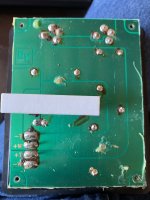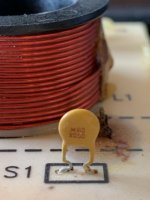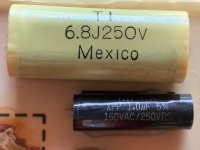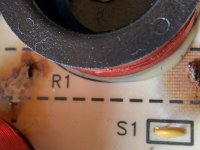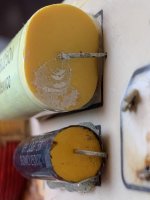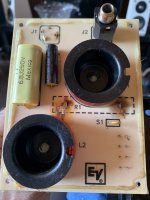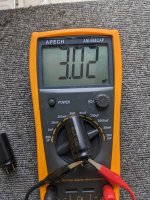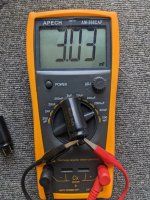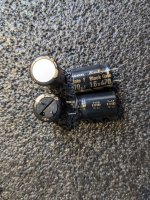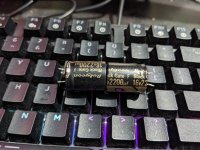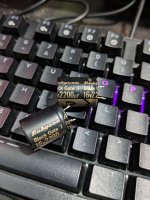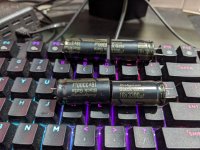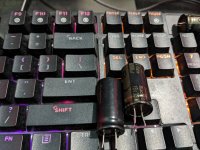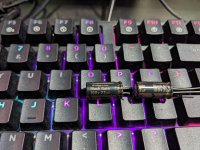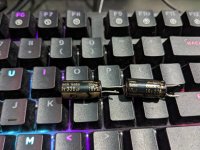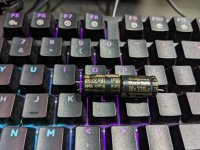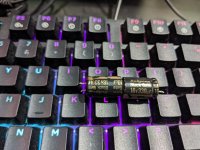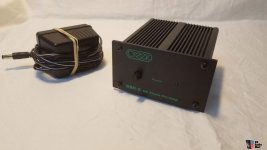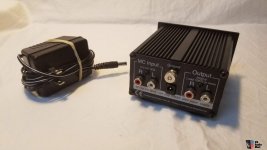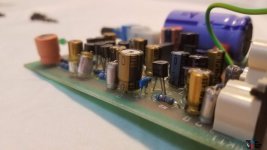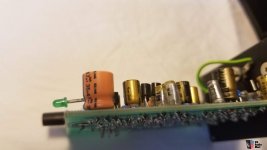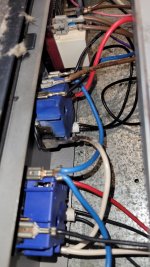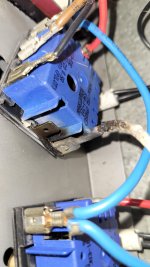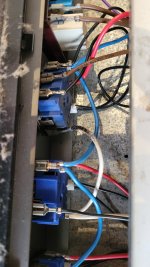Well, that was expensive. Sounds like it's gonna be worth it though.
The Ayre QB-9 Twenty is the latest of several upgrades made to this series over the years. New faceplate, new circuit, updated DAC chip. $3500 US retail.
The faceplate is very handsome in person by the way. It's aluminum, and from what I can guess the text and logo are left in polished mirror finish with the surrounding metal etched away to a matte grey. At back, there is a USB Type A input together with RCA and XLR line outputs, and jack for the AC power cable - no external power supply to fuss over! Apart from a set of dip switches in the back, there are no physical controls. The unit engages to display the sampling rate when the USB is connected to a computer and some audio software is run. The details of the sampling rate, etc., are set from the computer.
In terms of standard rack chassis sizes, it's roughly half width and a nominal height - compact but not tiny, it fits comfortably next to the Teac HA-501 shown in the photo above.
I appreciate that this DAC costs an order of magnitude more than what most people on this forum would likely consider paying for this functionality. It would be nice if it was possible to get this level of performance for $350, but in my experience, this is not possible. The QB-9/20 [as I will call it from here on in] is better than the Chord 2Qute (which is thin and sharp in comparison) and - while sharing some family characteristics - better than the Ayre Codex too (which is generally rougher). I can't comment on how it compares to similarly priced alternatives, nor could I even point to any. I didn't shop around, I just impulse-bought a used unit from a Japanese auction site. I heard enough to like in the Codex and had read the overwhelmingly positive reviews for the QB-9 series.
The first impression, listening via the HA-501 and Sennheiser HD600s, is of a) a low noise floor, b) a wide and detailed soundstage, and, c) an overly polite top end. Coming from the 2Qute, which has a lot of top-end sizzle, let's just say it took me a little while to re-adjust this new normal. By the second or third listening, though, I was satisfied that the Ayre wasn't playing the "rolled off treble = hi-fi" trick, it just wasn't adding splash, grit, or shine.
Where it gets interesting is that, after assuming the politeness was partly due to the warm balance of the headphone amp, I switched back to the Sapphire. Despite the anticipation that this would be the match made in heaven, I was disappointed to hear that the Sapphire brought a little metallic hardness to the treble, and added nothing much in the way of positives vs. the Teac. A little more experimentation revealed that the single-ended output from the QB-9/20 doesn't bring the same magic as the balanced XLR. The Teac, when connected via RCA, also sounded a little lackluster. Not bad by any measure, just - compared to what I had just experienced through the XLR cables - normal. That made the choice very simple: QB-9/20 / XLR / HA-501 / HD600. Together, this combo absolutely kills it.
